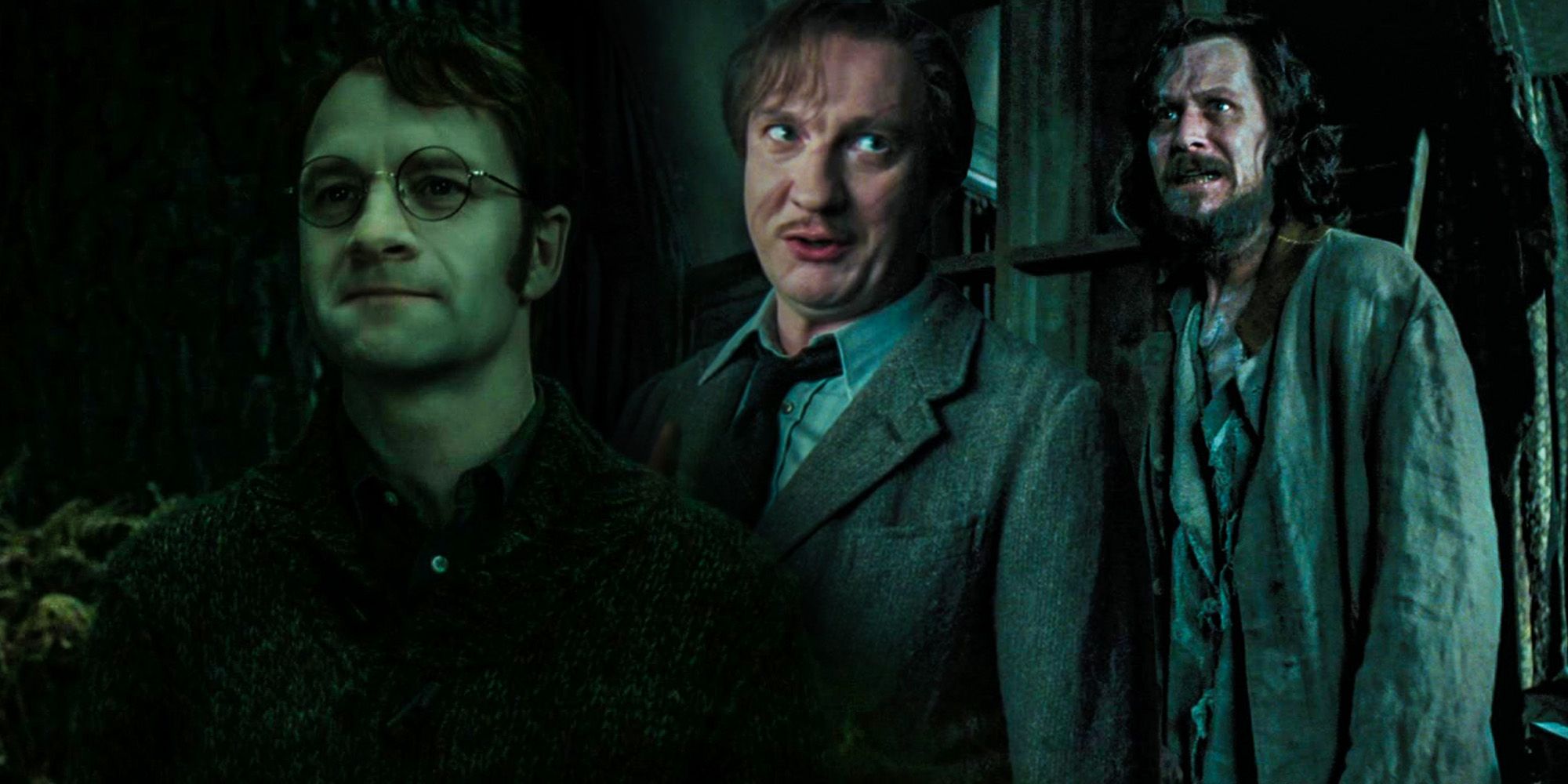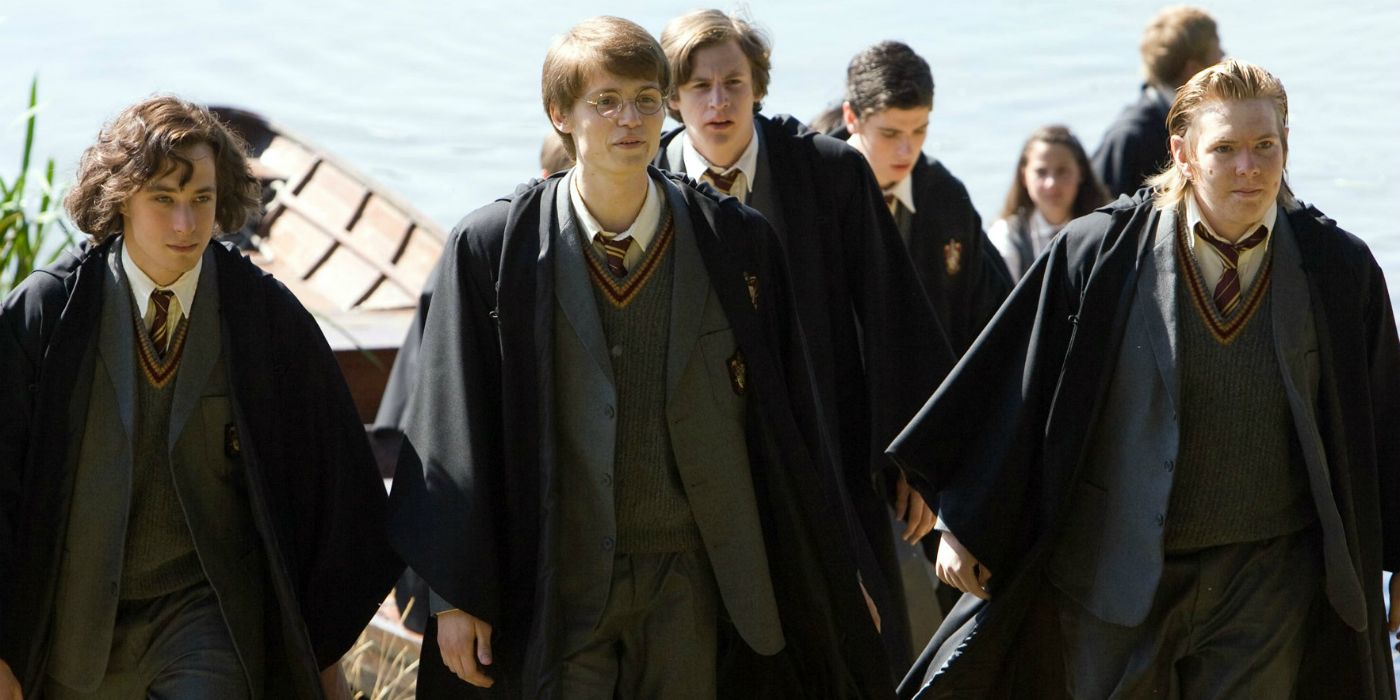A cut storyline from Harry Potter and the Prisoner of Azkaban created two major problems. While the Harry Potter movies have been a huge success with both audiences and critics, the third installment, Harry Potter and the Prisoner of Azkaban has always been singled out as an exceptional adaptation of its source material and arguably the best feature installment of the franchise.
In the original book of Harry Potter and the Prisoner of Azkaban, Harry Potter receives the Marauder’s Map, which shows the location of every person on the entire grounds of Hogwarts. The map was created by the Marauders: Moony, Wormtail, Padfoot, and Prongs. It is later revealed in the book that the real identities of the Marauders were Remus Lupin, Peter Pettigrew, Sirius Black, and James Potter, and the nicknames were based on whichever animal they could transform into.
There are hints in the Prisoner of Azkaban movie that those four friends are the Marauders; however, it is never outright stated in the adaptation, nor is it ever confirmed in any of the subsequent movies. While film adaptions often cut storylines for time, the Marauders’ identities and backstory being omitted caused two problems. By not confirming their identities, the movie doesn’t let the audience in on major character moments for the Marauders, even changing some of their backstories. It also makes key moments in other Harry Potter movies when the Marauders are mentioned confusing for viewers who haven’t read the books.
When the Marauders’ identities are revealed in the Prisoner of Azkaban book, it is accompanied by how they came up with the names and created the map. It is explained that when Sirius, Peter, and James found out Remus was a werewolf, they decided to become animagi — wizards who can change into a specific animal — to keep Remus company when he transformed. This showed how close the group of friends were in the past, making Peter’s revealed betrayal that much more devastating. By taking this out, that emotion is lost in the movie version. In the adaptation, Remus tells Harry that while the boy's father “had a talent for trouble," his mother Lily was “there for me at a time when no one else was.” This implies that it was actually Lily who was there for Remus during his werewolf transformations instead of James and the others. This changes a lot about the character of James Potter, making him seem aloof and uncaring versus the loyal and self-sacrificing friend he was in the book.
The Marauders’ identities are also constantly referred to in the other movies in the series. In Harry Potter and the Goblet of Fire, Peter Pettigrew is consistently called Wormtail by Voldemort. Calling a traitor by the nickname previously used by the friends he betrayed is in line with the kind of mind games Voldemort would play with his followers. This would not be evident to viewers who only watch the movies, however, as Peter is never referred to as Wormtail in the Prisoner of Azkaban adaptation. In Harry Potter and the Order of the Phoenix, Harry refers to Sirius as Padfoot several times, most importantly when he tries to give Snape a coded message that Sirius is in trouble. This moment would go over the heads of audience members who don’t know the Marauders’ identities, and therefore the tension from the scene is lost, as are the implications of Snape denying that he understands Harry’s message to save Sirius from Voldemort.
While the Harry Potter movie series managed to make entertaining and cohesive adaptions of the beloved books, Harry Potter and the Prisoner of Azkaban’s lack of confirmation of the Marauders’ identities was more of a blunder than a necessary sacrifice. The Marauders are fan-favorite characters, and the Harry Potter audience — both book readers and moviegoers alike — should have gotten to see their whole story told rather than only see them as troublemakers who were up to no good.
Next: Harry Potter: The Marauders & How They Got Their Names Explained


